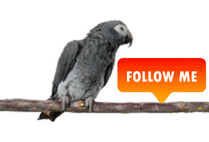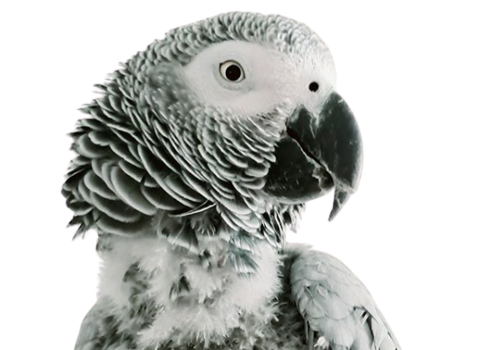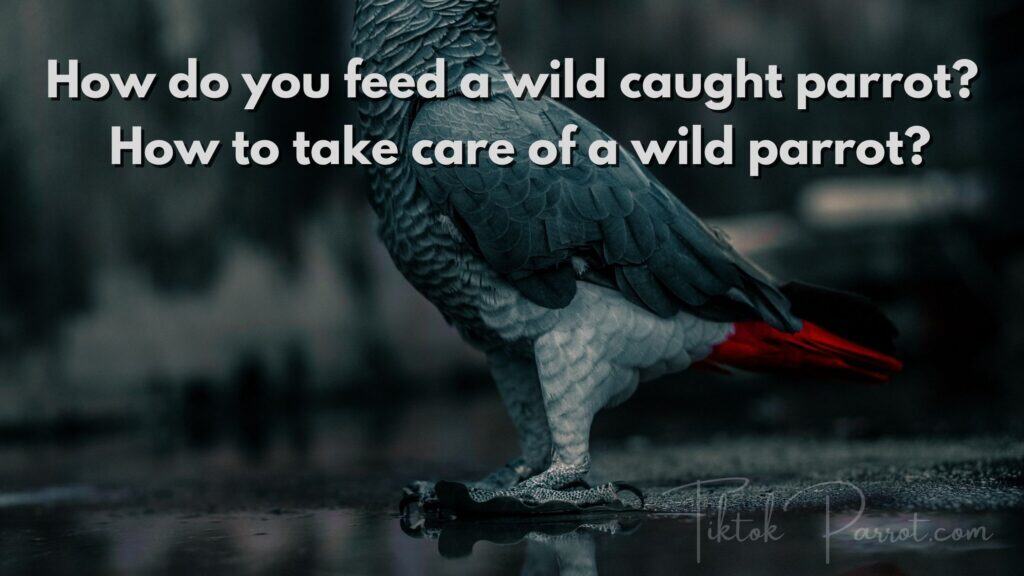A wild-caught parrot needs a diet that is different from a domesticated parrot. Wild-caught birds need more protein, vitamins, and minerals than domesticated ones do because they are more active.
A wild caught parrot is a parrot that has been found in the wild, and not bred in captivity. They have never been domesticated, and are not used to humans. In this article I will talk about what to feed a wild caught parrot and how to take care of a wild parrot or any bird.
Food is the most important factor when it comes to survival for a wild or a pet bird. Therefore most people often think about what to feed their wild-caught parrot and this article is going to provide you with some helpful information.
The diet of wild-caught birds is different from that of domesticated ones. Wild-caught birds eat a greater variety of foods, including insects and fruits.
In the wild, birds have to search for their food. They need to expend a lot of energy in order to find enough protein and vitamins. Domesticated birds, on the other hand, are fed by humans. They don’t need as much protein or vitamins because they are not searching for their own food.
This is why wild-caught birds need more protein and vitamins than domesticated ones do.
First, let’s talk about what is the best food for a wild-caught parrot. You can offer your bird any type of fresh fruit or vegetable, but you should avoid offering them so many nuts or seeds as they are high in fat and may cause constipation.
Next, let’s discuss the importance of feeding your bird fresh water every day. A healthy diet is not enough if your bird does not have access to fresh water. There are many ways to provide water for your bird including a bowl with a perch or a misting system that sprays water into the air so that it falls onto the ground in droplets.
The following is a list of care and common types of food that can be fed to wild caught parrots:
1- Feed the bird with seeds, fruit, vegetables, beans, and grains. (Always check on the internet about the food you are going to feed because some nuts, veg, and fruits can be deadly for parrots). These are all good options for feeding your bird if they are not allergic or sensitive to any of these types of foods.
- Fruits and vegetables (safe to feed e.g., apples, grapes, carrots)
- Nuts and seeds (safe to feed e.g., almonds, walnuts, sunflower seeds)
- Protein sources (boiled eggs but not daily)
2- Give it water in a shallow dish or bowl.
In wild birds can get water from the ground, trees, or ponds. But they cannot drink from a cup like we do. So they need shallow bowls of water that are easy to drink from. In order to provide birds with water, we should provide them with shallow dishes or bowls of water that are easy for them to drink from.
3- Change the water in the bowl daily.
This is a very simple task, the bowl should be washed properly before adding the fresh water. The water should be changed daily to ensure that it is fresh and clean. If the bird is not drinking enough water, it can lead to dehydration and other issues.
4- Keep the cage clean at all times.
Birds are very sensitive animals, especially when it’s wild. Because the wild bird is frightened of you and new to the environment. They can get sick if they are not kept in a clean environment. Therefore, the cage should be cleaned every day so that the bird can feel fresh and healthy.
A wild African grey parrot is a free-flying bird that does not require any special care. They feed on seeds, fruits, and nuts. In captivity, they may also eat fresh vegetables, cooked grains, and cereals.
They need a large variety of foods in their diet so they can get all the nutrients they need to stay healthy.
Why wild parrot is not eating?
This is a case of a wild parrot that has been taken into captivity and is not eating.
The first step, in this case, would be to determine why the parrot is not eating. It could be because the parrot does not like the food, it may have an illness, or it may have been traumatized by being captured.
The next step would be to try and find out what the parrot likes to eat. If we can’t figure out what the parrot likes to eat, then we will need to try different types of food until something works.
Reason the wild parrot is not eating in captivity as it does not know how to find food. So it is just going for the food that is provided to them. As a result, they are going hungry and their weight drops.
We can conclude from this that the wild parrot does not eat in captivity because it does not know how to find food and goes only for the food that is provided to them.
The problem with captive birds is that they don’t have any natural predators, which means that they don’t need to fly away to escape danger. They also never have the opportunity to build a nest and live with a mate. Both these things can cause them to stop eating.
To feed a wild-caught parrot, you need to keep trying, if nothing works then you will need to take it to a veterinarian for a physical exam and treatment. You should also make sure that the parrot has a suitable cage or enclosure. You will need to provide your food and feed the parrot at least twice per day.
Wild-caught parrots are not domesticated animals. They cannot be left alone in an enclosed space for long periods as they need company and care from humans.
The above information applies to all types of parrots, however, if you want to know specifically about wild African Grey Parrots, they also need the same care as other parrots. Because African Greys are known for their intelligence and can be trained to do a variety of tasks. It means they are more social than other types of birds, therefore they need some extra care.
Can a wild parrot be aggressive?
Yes, a wild parrot can be aggressive. Parrots are often known to be aggressive toward people they don’t know. They will bite and scratch humans who get too close to their nests or their territory.
The most common reason for a wild parrot to be aggressive is if they feel threatened. If the bird is nesting or feeding its young, it will attack anyone that gets too close. A wild parrot can also be aggressive when it feels threatened by its reflection in a mirror or window.
Not only wild parrots, but domestic parrots can also be aggressive, parrots are more likely to be aggressive because of their nature, size, or personality.
However it takes some time to socialize with humans, and the aggressiveness reduces slowly once a wild parrot feels safe in the environment you provide.
What should we do with the wild-caught parrot?
This is a question that many animal rights activists are asking. They say that it would be better to release the bird into the wild. The problem is, this bird has been living in captivity for so long that it isn’t able to survive in the wild.
Some people think that if we release this parrot into the wild, it will be killed by predators or die of hunger and thirst because it doesn’t know how to hunt or find water. Others say that they have seen released caged birds live very successfully in the wild.
In the past, parrots were captured and exported from their natural habitats to be sold. This was an unsustainable practice that has been going on for centuries. Nowadays, we have new technologies that can help us to catch these animals in a more sustainable way.
Should we release the wild-caught parrot?
The wild caught parrot is a beautiful creature. It is also very aggressive and will not hesitate to attack anyone who comes near it. The question is, should we release the wild caught parrot?
If you caught a wild parrot, the best thing is to let it go back into the wild. In case the parrot is hurt, try to give it the best care you can. Some people free the bird after recovery, and some do not want to free the bird because they develop close bonding with the bird.
Some people believe that the wild caught parrot should be released because of its beauty and rarity. They argue that if they don’t release it, then it would die in captivity. Others think that the wild caught parrot should not be released because it will just cause more trouble for other animals and humans living in the area.
Also, some think that releasing a wild-caught parrot would be cruel and cause it to die prematurely. However, others argue that it is better for the animal’s health to release into their natural habitat.
My closing thoughts
There are a number of different things that you can feed a wild caught parrot. The first thing that you should do is make sure that the bird is healthy and has had a vet check before starting to feed it anything. It needs to be evaluated for any potential illnesses or parasites.
A parrot’s diet needs to be varied and balanced in order for them to stay healthy. The best way to do this is by feeding them a variety of fruits, vegetables, nuts, seeds, grains and weekly add protein sources in such as cooked beans and boild eggs.
If you found this blog helpful, It would be great if you could share it with your family and friends who might find it useful as well.
For more useful content about African Grey parrots, you can subscribe my site with your email to get notification upon publishing a new blog, the subscribe box you can see on the right side of this page. Also if you get an alert on your web browser while browsing my site, allow it and that will also give you an alert whenever I publish a new blog. 🙂
Stay safe and much love !



